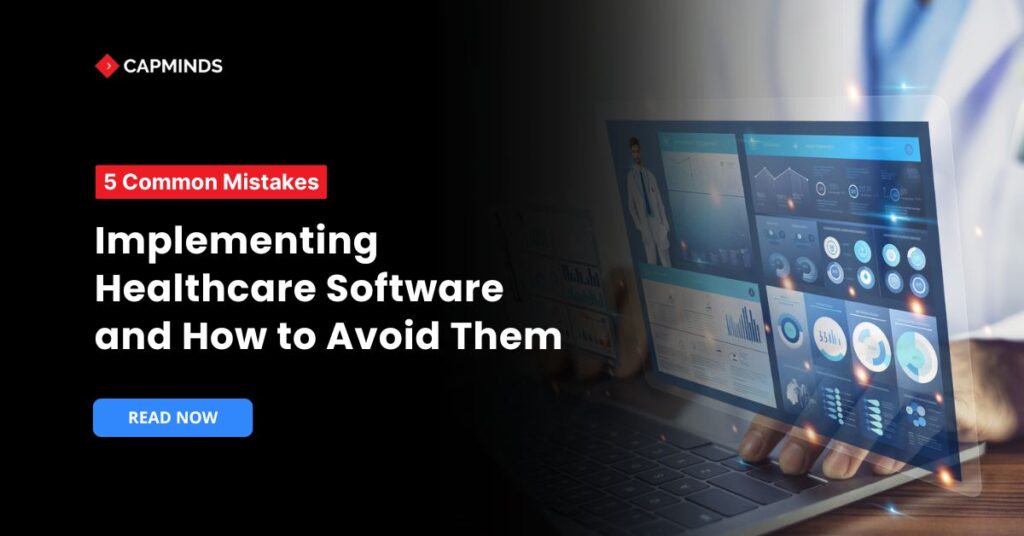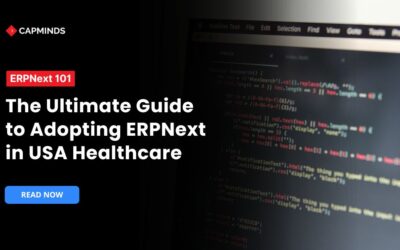5 Common Mistakes in Implementing Healthcare Software and How to Avoid Them
Most of the healthcare organizations depend on healthcare software for enhancing their patient care, improving workflow efficiency, and streamlining operations. Implementing healthcare software is a complex task that needs proper planning and execution.
Healthcare organisations make common mistakes such as the selection of the wrong software, insufficient planning and data, and user dissatisfaction.
In this blog, you’ll get to know the common mistakes in implementing healthcare software and the steps to avoid them.
5 Common Mistakes in Healthcare Software Implementation
Various mistakes might happen in the process of implementing healthcare software. Here are the common mistakes during the implementation process.
1. Lack of Planning
Many healthcare organizations implement the software without properly understanding their specific needs. They choose a system based on objective, cost, vendor reputation, or generic features.
They do not ensure whether it aligns with their unique workflows and operational requirements. Investing in a complex system may create problems in the future.
2. Insufficient Training and Communication
Providing training to users before and after implementation is necessary. Insufficient training and support lead to errors. Assuming that users themselves will understand how to use the software without formal training and support is a big mistake.
The organisation must train its staff in the new software process. Lack of communication between stakeholders, such as IT, clinical staff, and vendors, can affect the implementation of the software.
3. Ignoring Data Migration
Underestimating the complexity of data migration and integration with existing systems. Organisations fail to plan for seamless data transfer with other healthcare applications.
Not ensuring the data integrity and compatibility of the existing systems during data migration. Data loss and errors occur while executing the data migration from legacy systems.
4. Security and Data Privacy
Organisations fail to prioritize security compliance, which can put patient data at risk. Healthcare data is sensitive, having a high chance of cyberattacks and security threats.
Many healthcare organizations assume that software solutions automatically meet industry standards without thorough verification.
5. Monitoring and Feedback
Generally, organizations focus on the initial deployment but fail to monitor the software performance post-implementation and collect feedback from users. Without continuous evaluation, critical issues may go unnoticed.
To overcome these mistakes, there are a few ways to avoid errors in the implementation of healthcare software.
Solutions to Solve the Common Mistakes
1. Assessment Planning
Conduct research that involves stakeholders, including physicians, nurses, administrators, IT, and vendors. Identify pain points in the current system and define clear objectives for the incoming healthcare software.
Prepare a detailed plan about the scope, goals, implementation timelines, and resource allocation. Ensure vendors earlier whether the software meets specific needs and can be customized as required.
2. Training and Support
The organisation must develop a structured training program for different user roles. Providing hands-on experience, webinars, and detailed user manuals helps users to adapt quickly.
Establish a support team to assist users with troubleshooting and software-related queries. Organisations should encourage continuous learning through refresher courses and updates on new software features.
3. Workflow Integration
Plan a thorough data audit before data migration to identify inconsistencies, duplicate records, and data integrity. Develop a migration strategy that includes validation and backup processes.
Implement the data integration to check whether the new software is compatible with existing systems, such as EHRs, billing systems, and lab management software. Test data migration extensively before full deployment to minimize errors.
4. Data Security
Security measures such as strong data encryption, access controls, and multi-factor authentication help in securing patient data. Make sure that vendors prioritize compliance and security in their software.
Regular security audits and vulnerability assessments prevent cyberthreats. Train staff on best practices for data security and compliance requirements.
5. Post-Implementation Monitoring
Continuous monitoring is required post-implementation to track the software performance and usage. Creating feedback channels helps users to report issues and provide suggestions.
Schedule software updates and enhancements based on user feedback. Proper communication with vendors to address technical challenges and future scalability needs.
Successfully implementing healthcare software requires selecting the right solution. It needs proper strategic planning, stakeholder engagement.
By avoiding these common mistakes, healthcare organizations can ensure a smooth implementation process, improving efficiency and enhancing patient care.
Learn More: Custom Healthcare Software Development
CapMind’s OpenEMR Customization and Integration Service
CapMinds OpenEMR consigns clinicians with the best features and ways to integrate. It makes their workflows more efficient and filtered.
The integrated features will allow them to combine the ability of patient record management with conceptual and concurrent reminders.
This enhances the process of decision-making and improves patient care and quality.
- At CapMinds, OpenEMR custom solutions are developed with much care and accuracy to match the special practice needs.
- It will be low-cost and the perfect budget solution for your practice’s long-term future.
- CapMinds OpenEMR prioritizes secure data management & ensures compliance with industry regulations, offering healthcare providers peace of mind.
Get the best technologies and HIPAA-compliant and efficient OpenEMR from CapMinds that can be tailored to fit your practice.
Our OpenEMR services facilitate a Modern User Interface (UI), customization, production support & training. It also facilitates billing, reporting & specialty enhancements, clearing house integrations, e-prescription, cloud, and more.
“Get the most experienced, proven, and perfect professional support for your OpenEMR.”


